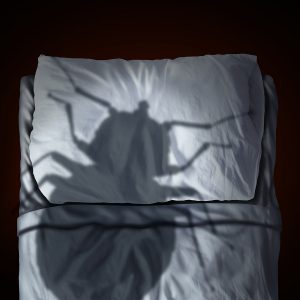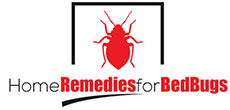 Where do they hide! Where do bed bugs hide?! That’s the question! Tell me. How many times have you ever been disturbed from your sleep by excruciating itchiness on different parts of your body? Have you ever woken up with reddish blisters on your neck, back, arms and legs? If yes, don’t ignore these signs. There is a high chance that your home has been infested with bed bugs.
Where do they hide! Where do bed bugs hide?! That’s the question! Tell me. How many times have you ever been disturbed from your sleep by excruciating itchiness on different parts of your body? Have you ever woken up with reddish blisters on your neck, back, arms and legs? If yes, don’t ignore these signs. There is a high chance that your home has been infested with bed bugs.
Bed bugs don’t transmit diseases as mosquitoes do, at least that’s one thing to be relieved at. However, the intense itchiness of their bites makes it unbearable to handle, resulting to constant scratching that may lead to bleeding and infection. Not to mention the weariness of not getting enough sleep and thoughts that they might attack you when you keep your guard down.
Just like any other pests, we can get rid of bed bugs by using contact pesticides in the form of sprays and powders. They are called ‘contact’ pesticides due to the nature of their application. They need to come in ‘contact’ with the bugs in order to work. Now, the problem is – where can you find these terrible pests?
In order to narrow down the places where to look for them, it is important that you learn something about their behavior. Bed bugs are remarkably good at hiding. Most of the time, they conceal themselves into hard-to-reach places which makes them more difficult to detect. They only come out from hiding when it’s time to feed. They usually attack you while you’re sleeping and immediately dash back to their hiding spots after a good meal.
Bed bugs tend to hide in places where they can access their source of food more easily. And where could be the best place that can serve as their perfect hideout? There is nowhere better than your bed. But as the infestation grows, they are likely to spread out to different places near your bed.
To help you find where bed bugs hide, consider these important facts about them:
· Bed bug size
One of the reasons why bed bugs have survived the tests of time is that nature is on their side. These buggers are endowed with a small and flat body that allows them to fit into tiny spaces. Even the smallest cracks or crevices on your ceiling can serve as their hiding spot.
· Movement
Fortunately for us, bed bugs can’t fly, they can’t even jump. They move from one place to another by crawling. They can travel a distance of 100 feet but they opt to look for hiding spots not further than 20 feet from their food source.
· Ideal place for hiding
When you look for a place to live in, you have specific preferences. You may choose a peaceful house distant away from gaudy city life or you may prefer to live near shopping malls or on a beachfront. Bed bugs also have their ideal homes. Since they don’t want to be seen, they are likely to look for dark places where they can conceal themselves even more. They would also prefer secured places where they can’t be disturbed.
Cleanliness is not an issue for bed bug infestation. They can dwell in either clean or filthy places.
Bed bugs also have specific choices with regards to the structure of their hiding place. They find it more difficult to crawl on smooth and plain surfaces such as plastic or metal materials. They prefer places made up of wood, paper or fabric materials where they can crawl easily.
· Dispersion
You might think your dilemma is over after wiping out a single colony of bed bugs. Chances are, there are other groups confined in different parts of the room. When a female bed bug is about to lay eggs, she usually stays away from the flock and finds other place for her offspring to live.
· Mode of transportation
Bed bugs can only crawl in order to travel from place to place, but they are good hitchhikers. They can be transported to another location such as different room or different building by moving objects that are infested by bed bugs. Due to their size, they can easily cling to clothes or luggage which can give them a ride to a new home.
Considering these basic facts about bed bugs can give you a better approach in tracking them down. So get your bed bug sprays ready and let’s start hunting them down!
Here are 6 top spots where bed bugs usually hide:
Beds
They are named ‘bed bugs’ for a reason. Probably the most ideal place to hide where they can have immediate access to their food source is – your bed. Beddings, in between mattresses, and box springs are typical hideouts for bed bugs. It is highly likely that majority of the bed beg population infesting your room is dwelling in your bed, you may want to start looking there.
Baseboards and carpet edges
Baseboards have tiny gaps which can be inhabited by these tiny bugs. While they occupy the holes on the baseboards, it is not surprising to see some of them dwelling on the carpet edges situated near the baseboards.
Dressers and nightstands
These are made up of wood which can make them crawl easier, with nail holes and dark corners, perfect hiding places.
Couches and chairs
Aside from the bed, we spend most of our time on our couches and chair. We often fall asleep on the couch while watching TV. Couches made from rough fabrics are also favorites among hiding spots.
Walls and ceilings
Bed bugs can spread out to places at least 100 feet from your bed. As long as there are tiny spaces that can hide them away from your sight, they can manage to survive. Don’t ignore those small cracks and crevices on the walls and ceilings, you can find lots of bed bugs living in those spaces.
Clothing
In cases of severe infestation, bed bugs even stick on your clothes to find a more suitable feeding haven. You won’t need to spray pesticides on your own clothes. The best way to get rid of bed bugs on clothes is heat treatment. In this method, infested objects such as clothes, mattress, couches, luggage, curtains, and sheets are exposed under high temperature hot enough to kill bed bugs.
The 6 spots stated above are the most common places where they typically hide. Bed bugs can actually live anywhere so it is important not to overlook other parts of your home that may harbor bed bugs. These may include door hinges, window moldings, picture frames, books, pet beds, and even your car.
If you intend to look for bed bugs, make sure to kill them immediately when you see them. Discovery of their hiding places will force them to look for another place and you may not see them in the same spot again. Always have a bed bug spray with you when you’re searching for them.




